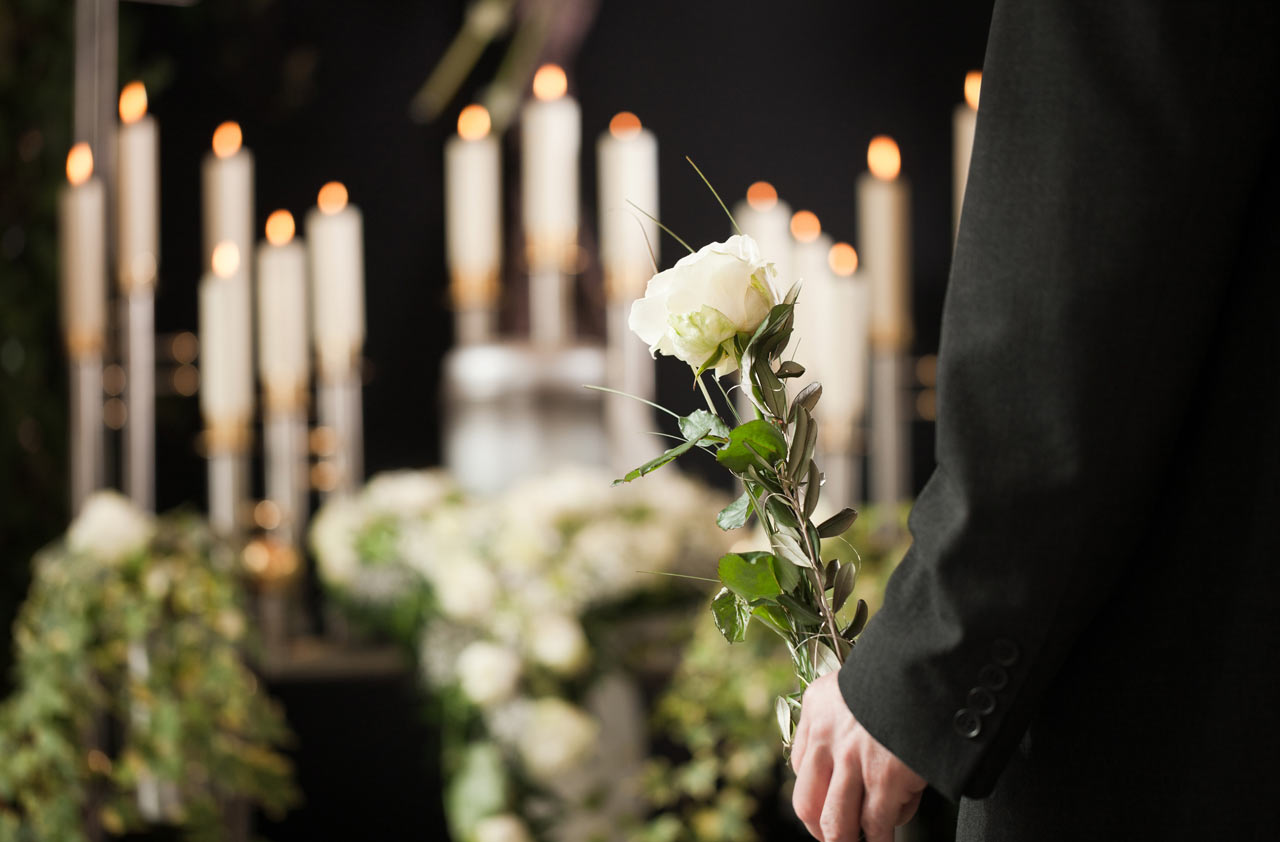7 Ways to Slash the Cost of a Funeral
Say goodbye to your departed loved one without spending a fortune. Here’s how.

In addition to the emotional toll, dying can take a heavy financial toll on the living. The median cost of a funeral runs about $8,500, according to the latest figures from the National Funeral Directors Association, including embalming, viewing, a hearse, a metal casket, a vault and some other related services. The price tag, 29.3% higher than it was a decade earlier, could come as a shock to grieving heirs and take a bite out of your estate.
There are two important points to keep in mind about the $8,500 figure. First, it doesn’t take into account some common cemetery expenses such as a burial site, marker, paid obituary and flowers. Second, it’s the median, or middle, price; some funerals can cost upward of $25,000.
Prepaying for your own funeral is one way to spare your survivors the hassle and expense, but generally speaking Kiplinger recommends thinking twice about prepayment because there are better ways to set aside cash for a funeral. A smarter approach might be to focus on reducing funeral costs. Here are seven ways to save.

Sign up for Kiplinger’s Free E-Newsletters
Profit and prosper with the best of expert advice on investing, taxes, retirement, personal finance and more - straight to your e-mail.
Profit and prosper with the best of expert advice - straight to your e-mail.
1. Compare prices. Licensed funeral homes are required by law to give you a General Price List, or GPL, which breaks out funeral expenses. Ask for a copy if one isn’t offered. “It’s apples to apples and oranges to oranges,” says Stephen Kemp, a licensed funeral director with Haley Funeral Directors in Southfield, Mich. “Families can compare and contrast.” Funeral homes are also required to provide pricing information by phone.
2. Stick to a budget. According to the Funeral Consumers Alliance, families in the throes of grief suddenly planning a funeral can “rush into making a decision, often resulting in unnecessary costs leading to even more stress down the road.” The nonprofit group, which advocates for affordable funeral planning, advises families to develop a budget and hold firm. Kemp says good funeral directors will either work within the budget or recommend a funeral home that can.
3. Think outside the box. The median price of a metal casket sold by a funeral home is around $2,400. High-end caskets can run into five figures. But you aren’t required to buy a casket from a funeral home, and the funeral home must accept a casket purchased elsewhere including online. Caskets at Costco start at $950, and the warehouse club ships to most states. Other online sellers include Overstock.com and BestPriceCaskets.com. A funeral home also can’t charge you a handling fee for receiving a casket purchased elsewhere.
4. Consider cremation. Cremation rates in the U.S. are approaching 50%, according to the Cremation Association of North America, and by 2019 the majority of Americans are projected to opt for cremation over burial. One big benefit of the shift is cost. The median price of a funeral with a viewing and cremation is about $6,000, the National Funeral Directors Association found, versus $8,500 for a comparable funeral with burial. Cremation expenses can be reduced even further by turning down the cremation casket (median funeral home price: $1,000). Funeral homes are required to offer inexpensive alternatives to cremation caskets, such as simple containers made of unfinished wood or fiberboard. Supplying your own urn (median funeral home price: $280) will trim the bill, too.
5. Skip the embalming. Preserving the body through embalming isn’t a routine requirement for every death. However, many funeral homes will require embalming if there will be a public viewing. But if a service is held within 24 to 48 hours with no public viewing, says Kemp, embalming may not be necessary. Even if the service can’t be held so quickly, refrigeration is an acceptable alternative to embalming in most states. The National Funeral Directors Association puts the median cost of embalming at $695.
6. Keep the service simple. The median charge for the use of funeral home facilities and staff for a viewing and ceremony adds up to $915, according to the National Funeral Directors Association. If you insist on a funeral home service but can’t afford the full production, Kemp says funeral directors will usually work with you to cut corners. Remember, you aren’t required to purchase a funeral home’s complete package. Instead, choose only the goods and services that fit your budget and needs. With cremations, in particular, the memorial service could be held elsewhere for a lot less, adds Kemp.
7. Donate your body to science. Science Care is one company that acts as a go-between for whole-body donors and labs doing medical research. For donors accepted by Science Care, costs are covered for cremation, transportation and filing of the death certificate. Cremated remains are returned to the family at no cost within three to five weeks. Another outfit that accepts whole-body donations is LifeLegacy. Certain factors including infectious diseases (hepatitis, HIV/AIDS and so on) can result in a donation being rejected.
Get Kiplinger Today newsletter — free
Profit and prosper with the best of Kiplinger's advice on investing, taxes, retirement, personal finance and much more. Delivered daily. Enter your email in the box and click Sign Me Up.

Bob was Senior Editor at Kiplinger.com for seven years and is now a contributor to the website. He has more than 40 years of experience in online, print and visual journalism. Bob has worked as an award-winning writer and editor in the Washington, D.C., market as well as at news organizations in New York, Michigan and California. Bob joined Kiplinger in 2016, bringing a wealth of expertise covering retail, entertainment, and money-saving trends and topics. He was one of the first journalists at a daily news organization to aggressively cover retail as a specialty and has been lauded in the retail industry for his expertise. Bob has also been an adjunct and associate professor of print, online and visual journalism at Syracuse University and Ithaca College. He has a master’s degree from Syracuse University’s S.I. Newhouse School of Public Communications and a bachelor’s degree in communications and theater from Hope College.
-
 Two Don'ts and Four Dos During Trump's Trade War
Two Don'ts and Four Dos During Trump's Trade WarThe financial rules have changed now that tariffs have disrupted the markets and created economic uncertainty. What can you do? (And what shouldn't you do?)
By Maggie Kulyk, CRPC®, CSRIC™
-
 I'm Single, With No Kids: Why Do I Need an Estate Plan?
I'm Single, With No Kids: Why Do I Need an Estate Plan?Unless you have a plan in place, guess who might be making all the decisions about your prized possessions, or even your health care: a court.
By Cynthia Pruemm, Investment Adviser Representative
-
 Five Ways to Save on Vacation Rental Properties
Five Ways to Save on Vacation Rental PropertiesTravel Use these strategies to pay less for an apartment, condo or house when you travel.
By Cameron Huddleston
-
 How to Avoid Annoying Hotel Fees: Per Person, Parking and More
How to Avoid Annoying Hotel Fees: Per Person, Parking and MoreTravel Here's how to avoid extra charges and make sure you don't get stuck paying for amenities that you don't use.
By Cameron Huddleston
-
 How to Appeal an Unexpected Medical Bill
How to Appeal an Unexpected Medical Billhealth insurance You may receive a bill because your insurance company denied a claim—but that doesn’t mean you have to pay it.
By Rivan V. Stinson
-
 Amazon Prime Fees Are Rising. Here’s How to Cancel Your Amazon Prime Membership
Amazon Prime Fees Are Rising. Here’s How to Cancel Your Amazon Prime MembershipFeature Amazon Prime will soon cost $139 a year, $180 for those who pay monthly. If you’re a subscriber, maybe it’s time to rethink your relationship. Here’s a step-by-step guide to canceling Prime.
By Bob Niedt
-
 How to Haggle for Almost Anything
How to Haggle for Almost AnythingSmart Buying Learning how to haggle is an invaluable skill. These strategies will help you negotiate a better price for just about any product or service.
By Katherine Reynolds Lewis
-
 Disability Insurance Can Provide COVID Coverage
Disability Insurance Can Provide COVID CoverageCoronavirus and Your Money If you are concerned about long-term complications from COVID-19, consider disability insurance coverage.
By Rivan V. Stinson
-
 21 Things You Can't Return to Amazon — Either Online or In-Store
21 Things You Can't Return to Amazon — Either Online or In-StoreDid you know there are things you can't return to Amazon? Before adding these 21 items to your cart, be sure to read Amazon's return policy first.
By Bob Niedt
-
 How to Avoid a Charity Scam
How to Avoid a Charity Scampersonal finance Scammers never quit, even when you're trying to be altruistic. But you can avoid getting duped if you do your homework.
By Rivan V. Stinson